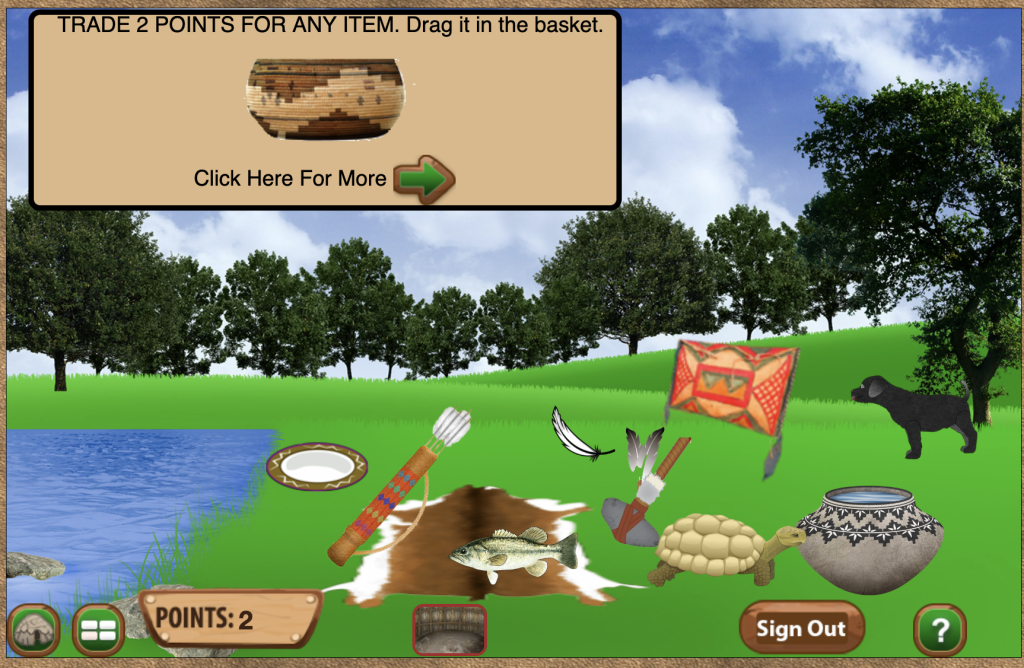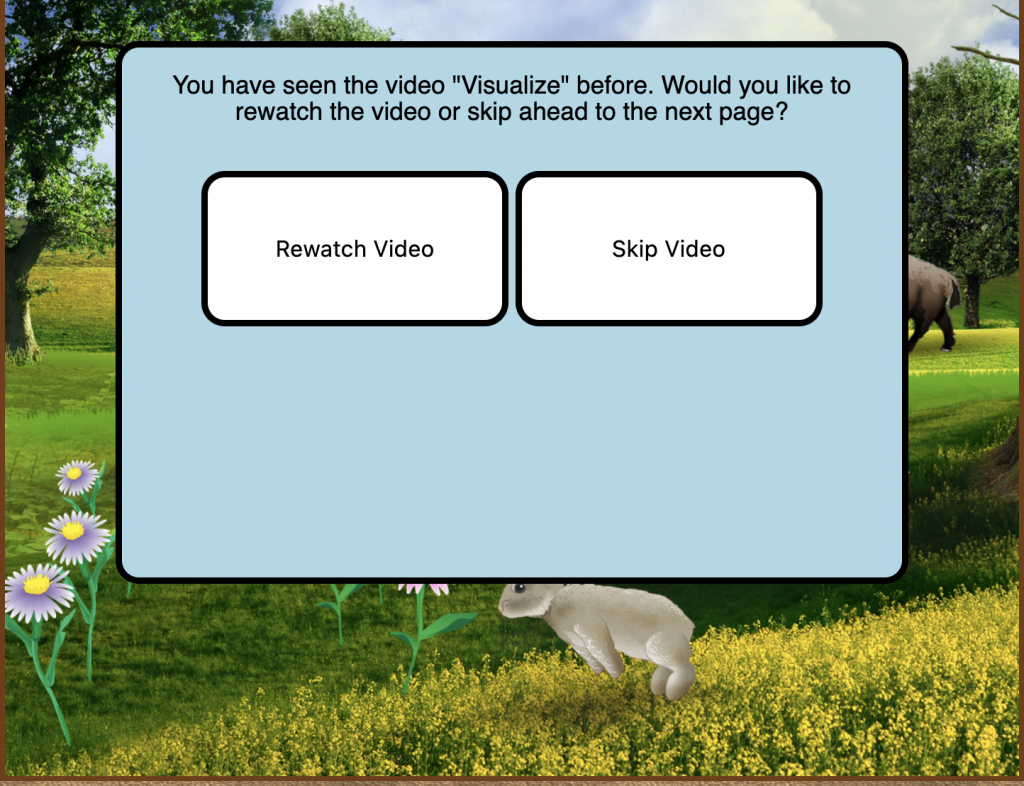Why did we spend 324 hours (yes, I tracked it) updating Making Camp Premium when it already had thousands of users across over 200 schools? Didn’t teachers and students already agree that it was much better than math worksheets and that the authentic stories and information on Ojibwe history and culture were better than anything else they had previously?
We asked educators how we could improve our software
For almost two years, we have been meeting with students and teachers to improve our software. In 2020, we interviewed 125 educators in five states – maybe it was more. I do know it was really, really cold in January in Minnesota, Michigan, North Dakota and South Dakota, so I definitely remember those.
In 2021, through the Growing Math Project, we have met with over 250 teachers and had the opportunity to visit dozens of their classrooms.
Major suggestions from students and teachers
Meet Sam (and also Annette)
The refrigerator magnets activity was popular. Students clicked on a button to get a division problem with refrigerator magnets. They dragged the number magnets to answer a question and each time they earned a new decorative magnet. In the new Making Camp Premium, we explain the connection with the Ojibwe people.
The new introduction, narrated by Annette Mennem, from the Turtle Mountain Band of Ojibwe, begins by explaining that the Ojibwe migration is part of history but that millions of Indigenous people live in the United States today. She then goes on to tell about her nephew, Sam, who is Ojibwe, lives on a reservation in the northern United States, and had trouble learning division until his mother started using these magnets to teach him.
That’s an Indian voice!
– Little girl at United Tribes Technical College powwow, talking to her friend, while playing the new Making Camp Premium
Reason number 1,487 why Annette is awesome – because when I called her and said, “Hey, Annette, I need an Ojibwe voice for this game.” She just laughed and said, “Okay, send me the script.”
Kids DO notice if characters in the game sound like them.
Not every student is at the same spot
Some students need to watch an explanatory video a second time. Others can skip it and just answer the question. Now, re-watching the video is optional.
Good software is easy to use
One thing I know beyond a shadow of a doubt from teaching the past two years – teachers are busy. Students are stressed. No one needs one more unnecessary thing to learn.
We added a SIGN out button so it is clear when you leave the game. Closing the browser or swiping the app also still signs you out, but this just makes it easier.
We added an option to show the password when you sign in.
We make you type your password twice when you register as a new player, so if you meant to type LinguiniAlfredo and you typed LinguineAlfred, you catch it right then and are not just frustrated when you go back to play and your password doesn’t work.
Minor improvements make a major difference
We made dozens of small changes, most of these to make the game look better on mobile devices. We added more sounds, improved some of the images of items in the wigwam, added more information about those items. What we have learned over the years is that each of these changes individually seems a picky, little thing but when you add them all up it equals a better experience which leads to kids playing – and learning – more. Best of all, if you click on this link, you can play the new, updated version for Chromebooks available for free. It costs $1.99 but that link will take you to the game for free , so aren’t you glad you read to the end of this post?





